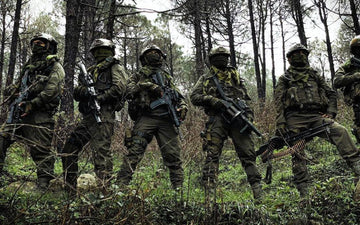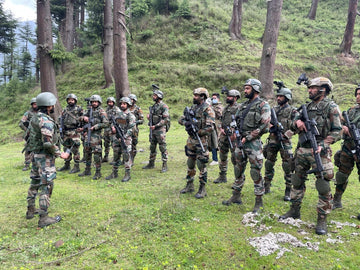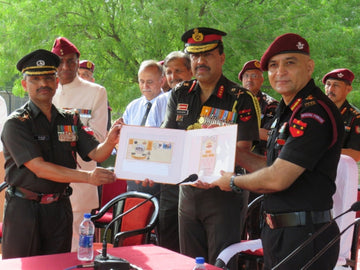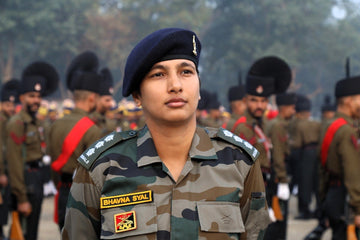Joining the Indian Navy after completing the 12th standard is a dream for many young students looking to serve their country while enjoying a dynamic career. The Indian Navy not only offers a plethora of career opportunities but also instills a sense of discipline, teamwork, and patriotism. For those eager to embark on this journey, understanding the various pathways, eligibility criteria, and requirements is crucial. This comprehensive guide will delve into the various opportunities within the Indian Navy for 12th-grade graduates.
Historical Context
The Indian Navy has a storied history dating back to the pre-colonial era, showcasing India's naval prowess throughout the ages. Founded as the Royal Indian Navy in 1612, it became the Indian Navy post-independence in 1950. Over the decades, the Navy has broadened its horizons, adopting modern technology, enhancing its operational capabilities, and emphasizing international cooperation. With national security becoming paramount, particularly in the Indian Ocean region, the Indian Navy's role has expanded significantly, making naval careers increasingly essential for young Indians seeking to contribute to their nation.
Pathways to Join the Indian Navy After 12th Standard
The Indian Navy offers multiple pathways for aspiring candidates who have completed their 12th standard, which can be broadly categorized into officer entries and sailor entries. Each category has its own specific eligibility criteria and selection processes.
Eligibility Criteria
Officer Entries
- Educational Requirements: To apply for officer roles, candidates must have passed their 12th standard with Physics, Mathematics, and English as compulsory subjects.
- Performance Metrics: A minimum of 70% in Physics, Chemistry, and Mathematics (PCM) and at least 50% in English either in 10th or 12th standard is often mandated for certain direct entries.
Sailor Entries
- Officer Entry: For the Agniveer SSR (Senior Secondary Recruit) pathway, candidates must have completed 10+2 with a focus on PCM.
- Matric Recruit: Those interested in joining as Agniveer MR (Matric Recruit) only require a minimum qualification of 10th pass.
Officer Entries
The Indian Navy provides several officer entry schemes for those who aim to take on leadership roles. Here are the most prominent options:
10+2 (B.Tech) Cadet Entry Scheme
The 10+2 B.Tech Cadet Entry Scheme is a highly sought-after program that allows candidates to join the Indian Navy as officers directly after their 12th standard.
- Eligibility: Candidates need at least 70% in PCM and have to qualify for the JEE (Main) exam.
-
Selection Process: The selection involves multiple stages:
- Shortlisting based on academic performance
- Services Selection Board (SSB) evaluation
- Physical Efficiency Tests
- Detailed Medical Examination
This pathway allows candidates to pursue engineering education with a focus on naval studies and practical training.
NDA Entry
Another prominent avenue for entering the Indian Navy is through the National Defence Academy (NDA) entry.
- Eligibility: Candidates must qualify the NDA examination conducted by the Union Public Service Commission (UPSC).
-
Process: The selection process includes:
- The NDA exam, which assesses mathematical skills, general knowledge, and ability to understand moral and ethical reasoning
- Subsequent SSB interview, which includes psychological tests, group tasks, and personal interviews
- Physical Efficiency Tests
- A medical examination
Once selected, candidates undergo training at the NDA in Khadakwasla, Pune, before moving to the Indian Naval Academy for specialized training.
Sports Entry
The Indian Navy also provides opportunities for candidates with exceptional sporting talent through the Sports Entry Officer scheme.
- Eligibility: Candidates who have represented their school, state, or country in any recognized sports can apply.
-
Selection Process:
- Trials held at designated Indian Naval centers
- A comprehensive medical evaluation for cleared candidates
This pathway is ideal for those who have shown excellence in sports, offering them an opportunity to serve while pursuing their passion.
Sailor Entries
While officer roles in the Navy represent leadership and strategic command, the sailor roles are equally vital for operational efficiency. Here are the key pathways under sailor entries:
Agniveer SSR (Senior Secondary Recruit)
Under the new Agnipath Scheme, candidates can join the Navy as sailors through the Agniveer SSR category.
- Eligibility: Candidates must possess a 10+2 qualification with PCM.
-
Selection Process:
- Written examination
- Physical Fitness Test (PFT)
- Medical Examination
Candidates selected under this scheme will undergo training and serve for a fixed term, with opportunities for further education and skill development during their tenure.
Agniveer MR (Matric Recruit)
This category is tailored for those aspiring to join as cooks, stewards, and sanitary hygienists.
- Eligibility: A minimum of a 10th pass is required.
-
Selection Procedure:
- Written examination
- PFT
- Medical Examination
This entry seeks to attract candidates looking to build a foundational career in various support roles within the Navy.
Other Sailor Roles
In addition to Agniveer roles, the Navy has various other positions, including:
- Artificer Apprentice (AA): Requires 10+2 with PCM and involves a technical training regime focusing on maintenance and integration.
- Musician: Candidates with musical talent can apply, highlighting a different facet of Navy life beyond combat roles.
- Senior Secondary Recruit (SSR): Open to those completing 10+2, focusing on various naval responsibilities.
These roles involve similar selection processes inclusive of written tests, physical fitness assessments, and medical evaluations.
Training and Development
Regardless of the pathway chosen, training is a significant aspect of service within the Indian Navy. All selected candidates undergo rigorous training at the Indian Naval Academy (INA) situated in Ezhimala, Kerala.
-
Training Components:
- Basic Training: Instills discipline, leadership qualities, and physical fitness.
- Specialized Training: Post basic training, officers are trained based on their chosen branch, such as engineering, navigation, or medicine.
- On-the-job Training: Real-world experience gained through placements onboard naval ships and at training units.
The importance of robust training cannot be underestimated, as it lays the foundation for a successful career in the Navy.
Branches for Officers
The Indian Navy offers a diverse range of branches for officers depending on their interests and skill sets:
- Executive Branch: Focuses on overall operations, administration, and logistics.
- Engineering Branch: Handles technical operations and maintenance of machinery and systems onboard.
- Education Branch: Contributes to training and the educational growth of the officers.
- Medical Branch: Provides medical services to personnel.
- Electrical Branch: Manages electrical systems and electronics.
Each branch has specific roles that cater to candidates' strengths, enhancing both personal fulfillment and operational efficiency within the Navy.
Case Studies or Real-world Applications
Several inspiring stories emerge from individuals who joined the Indian Navy after their 12th grade. Consider the example of Sub Lieutenant Shivam, who pursued the NDA pathway after scoring well in his PCM subjects. Through hard work and determination, he faced the rigorous selection process and emerged successful. Today, he serves in a strategic operational role, coordinating various missions and showcasing the potential career growth that a Navy officer can aspire to.
Similarly, many Agniveers have shared transformational journeys. Upon joining as sailors, they have received advanced training and exposure. They report a significant enhancement in their skills and character, marking a clear trajectory towards future leadership roles within the Navy or in civilian sectors.
Statistical Data and Research Insights
The Indian Navy has noted consistent recruitment over recent years, maintaining a balanced inclusion of both officer and sailor entries. In 2022 alone, it was reported that the Indian Navy aimed to recruit close to 10,000 personnel through various entries under the Agnipath scheme. This initiative indicates the Navy's commitment to keeping its manning levels effective, modern, and adaptable to operational needs.
Furthermore, a study by the Ministry of Defence highlighted that a significant percentage (over 80%) of those serving fully endorse their careers, citing job satisfaction and pride in serving the nation as primary reasons.
Challenges and Solutions
While the Indian Navy offers a promising career, candidates may face challenges such as:
- Intense Competition: With thousands vying for limited slots, the selection process can be daunting.
- Rigorous Training Requirements: Adapting to the physical and mental demands of training can be tough for some candidates.
- Duration of Service: Especially in the case of Agniveers, the stipulated service duration may seem limiting.
Proposed Solutions
- Preparation: Candidates can benefit from dedicated coaching programs that prepare them for the written exams and physical tests.
- Support Systems: Building peer support networks can help ease the transition into training environments and lifestyle changes.
- Education and Awareness: Understanding the diverse career trajectories and skills enhancement opportunities within the Navy can motivate potential candidates.
Future Trends and Predictions
As the Indian Navy continues to evolve with technological advancements and strategic needs, the pathways to joining the organization may expand. The introduction of Artificial Intelligence, Cyber Warfare, and unmanned vessels suggests a shift in skill requirements. Future recruits may need to be more adaptable and possess tech-savvy skills. Programs focusing on STEM (Science, Technology, Engineering, and Mathematics) education in schools may prepare future candidates better for these roles, thereby enhancing overall Navy capabilities.
Moreover, the emphasis on health and fitness is likely to grow, influencing the physical standards required for service. Hence, nurturing a proactive lifestyle from an early age could become essential for aspirants.
Conclusion
Joining the Indian Navy after 12th standard is not just a career path; it is a commitment to serving the nation while enjoying unparalleled personal and professional growth opportunities. Candidates must understand the various entry pathways, eligibility criteria, and the nature of service in the Navy. Whether through imaginative schemes like Agnipath or traditional routes like NDA, each avenue presents its unique set of challenges and rewards.
To maximize your chances of success, preparation is key—both academically and physically. By leveraging available resources, including specialized coaching and online materials such as those offered by SSBCrack and SSBCrackExams, aspirants can position themselves effectively to achieve their dream of serving in one of the most prestigious naval forces in the world. As you embark on this journey, remember that every success in joining the Indian Navy is built upon the foundations of hard work, perseverance, and a deep-seated passion for serving your country.





